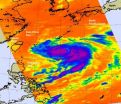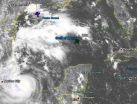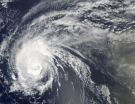"For a tsunami warning system to be effective, it must operate flawlessly, and emergency officials must coordinate seamlessly and communicate clearly," said John Orcutt, chair of the committee that wrote the report and a professor at the Cecil H. and Ida M. Green Institute of Geophysics and Planetary Physics at Scripps Institution of Oceanography in La Jolla, Calif. "However, if a large earthquake near shore triggers a tsunami, it could reach the coast within minutes, allowing hardly any time to disseminate warnings and for the public to react. Education and preparation are necessary to ensure that people know how to recognize natural cues -- such as earthquake tremors or receding of the water line -- and take appropriate action, even if they do not receive an official warning."
At the request of Congress for a review of the nation's tsunami efforts, the report finds many enhancements have been made since 2004, including an increase in the amount and quality of hazard and evacuations maps and the expansion of the Deep-Ocean Assessment and Reporting of Tsunamis (DART) sensor network that indicates the size of tsunamis. There have also been improvements in coastal sea-level stations and the Global Seismic Network operated and maintained by the U.S. Geological Survey and the National Science Foundation. Moreover, various states have evaluated select tsunami-prone communities and initiated several tsunami education and awareness efforts. However, improvements to the DART network's reliability, station coverage, and operations are needed.
In addition to expanding detection and forecasting, an ideal and comprehensive tsunami program will require risk assessments, public education, and a well-coordinated response, the committee concluded. Persistent progress in these areas will be needed. To gauge how to prioritize efforts, the report recommends first completing a comprehensive risk assessment that characterizes the hazards, inventories the threatened populations and assets, measures the preparedness and ability of individuals and communities to successfully evacuate, and estimates expected losses. Tsunami education and preparation could also be improved by undertaking periodic and comprehensive vulnerability assessments, establishing a review strategy and leadership chain for post-tsunami events, and creating new tsunami detection techniques and analyses.
Improving Warning Messages and Coordination
The committee determined that the likelihood of individuals responding appropriately to tsunami warnings increases if they receive consistent, clear, and accurate warning messages from the two Tsunami Warning Centers (TWCs), stationed in Alaska and Hawaii, and local and state emergency managers. Operating under the National Oceanic and Atmospheric Administration's National Weather Service, the TWCs monitor seismic activity and sea levels to detect tsunamis and warn emergency managers in their respective regional "areas of responsibility." However, even though the TWCs issue the warning messages, they cannot order evacuations because they are part of the federal government. Rather, local officials are responsible for transmitting alerts throughout their respective jurisdictions, issuing evacuation orders, managing evacuations, and declaring all-clears. Therefore, close coordination between the TWCs, states, and local jurisdictions is needed to ensure that the public receives consistent information about the threat and proper protective action.
Although multiple, consistent tsunami warning messages increase public responsiveness, the organizational model of two TWCs is problematic because the two sets of warnings often conflict, causing confusion among the media, some local officials, and the public. For example, in June 2005, media outlets in the Pacific Northwest received messages from both TWCs that seemingly contradicted each other because their respective areas of responsibility were not understood. The committee recommended that the message content be improved or that the two TWCs release one message that includes information for all areas under their responsibility.
The TWCs are also designed to be backups for each other, but they do not operate as such, creating an illusion of redundancy that could prove dangerous and costly, the report says. Significant changes need to occur in the management, operations, software and hardware architecture, and organizational culture for the two to become functionally redundant. Additionally, the committee recommended that as part of the long-range planning efforts, the TWC organizational structure should be evaluated -- including deciding whether multiple TWCs should issue a single message or a single, centrally managed center should be created, such as the Hurricane Center.
### The report was sponsored by the National Oceanic and Atmospheric Administration; University of Alaska, Fairbanks; and National Academy of Sciences. The National Academy of Sciences, National Academy of Engineering, Institute of Medicine, and National Research Council make up the National Academies. They are independent, nonprofit institutions that provide science, technology, and health policy advice under an 1863 congressional charter. Committee members, who serve pro bono as volunteers, are chosen by the Academies for each study based on their expertise and experience and must satisfy the Academies' conflict-of-interest standards. The resulting consensus reports undergo external peer review before completion. For more information, visit http://national-academies.org/studycommitteprocess.pdf. A committee roster follows.
Copies of Tsunami Warning and Preparedness are available from the National Academies Press; tel. 202-334-3313 or 1-800-624-6242 or on the Internet at http://www.nap.edu. Reporters may obtain a copy from the Office of News and Public Information (contacts listed below).
Contacts: Jennifer Walsh, Media Relations Officer
Christopher White, Media Relations Assistant
Office of News and Public Information
202-334-2138; e-mail news@nas.edu
[ This news release and report are available at http://national-academies.org ]
NATIONAL RESEARCH COUNCIL
Division on Earth and Life Studies
Board on Ocean Studies
Committee on Review of the Tsunami Warning and Forecast System and
Overview of the Nation's Tsunami Preparedness
John A. Orcutt (chair)
Professor
Institute of Geophysics and Planetary Physics
Scripps Institution of Oceanography
La Jolla, Calif.
Martha R. Grabowski (vice chair)
Professor and Director
Information Systems Program
Le Moyne College
Cazenovia, N.Y.
Brian F. Atwater*
Geologist
U.S. Geological Survey
Seattle
Ann Bostrom
Associate Dean of Research and Associate Professor
Daniel J. Evans School of Public Affairs
University of Washington
Seattle
George Crawford
Earthquake Program Manager
Washington State Emergency Management Division (retired)
Lacey
Richard K. Eisner
Visiting Professor
Disaster Prevention Research Institute
Kyoto University
Japan
Jian Lin
Senior Scientist and Henry Bryant Bigelow Chair for Excellence
Department of Geology and Geophysics
Woods Hole Oceanographic Institution
Woods Hole, Mass.
Hugh B. Milburn
Supervisory Ocean Engineer
NOAA's Pacific Marine Environmental Laboratory (retired)
Lake Forest Park, Wash.
Dennis S. Mileti
Professor Emeritus
Department of Sociology and
Director
Natural Hazards Center (retired)
University of Colorado
Boulder
Costas E. Synolakis
Professor of Civil, Environmental, Aerospace,
and Mechanical Engineering, and Director
Tsunami Research Center
University of Southern California
Los Angeles
Nathan J. Wood
Research Geographer
U.S. Geological Survey
Vancouver, Wash.
Harry Yeh
Miles Lowell and Margaret Watt Edwards Distinguished Chair
in Engineering and Professor of Coastal and Ocean
Engineering
Oregon State University
Corvallis
STAFF
Claudia Mengelt
Study Director
* Member, National Academy of Sciences
END



